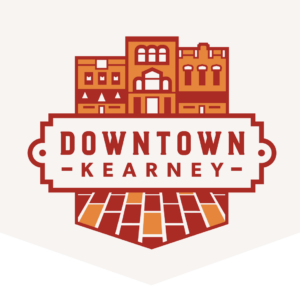Hub Staff Writer KEARNEY — Redeveloping Kearney’s historic, downtown buildings is not for the faint of heart, city officials and building owners agree.
Those who wish to overhaul these structures face a myriad of challenges, including cost and a lack of contractors experienced with such renovation projects.
“We certainly would like to have downtown serve as an economic and cultural hub for our community, but we also understand that there can be some challenges for redevelopment of those areas,” said Eric Hellriegel, assistant city manager.
In 2016, Patrick Moore bought the former McCue’s Grocery Store at 2008 Ave. A, which was built in 1907. He has been working to redevelop the facility into a commercial and residential space. McCue’s Nebraska Taproom opened earlier this week.
“We haven’t done a lot of it (these kinds of projects) so the experience that people here have is in traditional, commercial construction or new residential construction,” said Moore, who also is a project architect for Wilkins ADP of Kearney. “So to find people who understand how to preserve an old building and do brick tuckpointing and these other issues that you do when you’re working on old buildings, there’s not a lot of these people around. If there are, they may be hard to get to come to your project.”
In April, one building owner, Brent Yaw of Kearney, who owns the facility at 2224 Central Ave., gave a presentation to the Kearney Community Redevelopment Authority on potential price tags for facility owners looking to revamp downtown space.
In his presentation, he listed obstacles such as significant infrastructure cost including fire protection, electricity, plumbing and HVAC; limited number of qualified and willing contractors; the property valuation method limiting the effectiveness of tax-increment financing and rental rates for commercial property.
Brent and Theresa Yaw still are in the early stages of renovating the upstairs space of 2224 Central Ave. but they hope their work will inspire other downtown Kearney building owners to do the same.
He and his wife, Theresa, bought the building for about $180,000. In an interview with the Hub, Brent estimated the cost to renovate the building, which they believe was finished in 1913, will be $350,000-$400,000.
Andrew Brackett and Brock Arehart, owners of Kitt’s Coffee Bar and Calico Coffee Company, spent more than two years reviving the building at 110 E. North Railroad St. into a coffee shop. As they dove into the project, they quickly realized construction was going to take more financial resources and time than anticipated.
Originally, they had planned to refinish rather than replace the flooring in the building, which was built in 1920. However, they quickly discovered it was rotten and ended up having to install all new flooring.
“You take a line item budget where you were expecting to spend about $15,000 refinishing floors and you go buy new flooring and you install all of that — the ticket just skyrocketed all of a sudden on a project like that,” Brackett said.
However, while costs may be an intimidating factor, city officials and building owners maintain that keeping up with the downtown district is a vital component to keeping the heart of the city alive and thriving. They hope success with renovation projects will inspire other building owners to also invest in redevelopment.
“If you want a vibrant town, you have to have a good downtown,” Yaw said.
In his presentation, Yaw stated, the “status quo will not generate a ‘work, live, play’ environment in downtown Kearney.” He then listed a number of redevelopment support sources: Downtown Improvement Grants, tax-increment financing, Community Development Block Grants, Downtown Upper Story Redevelopment and state and federal historic tax credits.
Some city officials are looking for additional ways to provide financial support for downtown building owners.
“I think one thing that would really help it (redevelopment) move along would be if we could identify some more grant types of funding so that the people who take on this renovation have some financial support because they’re beautiful old buildings, but they are old,” said Tami James Moore, who serves on the Kearney Planning Commission and is running for Kearney City Council and is the mother of Patrick Moore.
“To bring them back to life requires a lot of money. So we need to have some funding to help support the developers and whoever wants to do that renovation. We really don’t have a pool of money at the city to do that but there are a lot of outside grants available.”
To encourage these projects, the city is working to find financial resources for downtown building owners.
For more than a decade, the city and Kearney CRA have offered facade improvement grants for businesses and property owners.
In 2016, four downtown Kearney businesses had face-lifts with the assistance of $10,000 grants offered through the Kearney CRA. Also in 2016, four grants of $2,500 each were awarded for engineering costs on projects to rehabilitate second floors of downtown Kearney businesses. The money allowed for developers to hire consultants and determine what redevelopment costs would be.
“What we’re learning is that those costs are higher than anticipated,” Hellriegel said. “And, so, we are evaluating ways that we can maybe help provide a cocktail of sorts to help take care of some of the costs that would be necessary.”
Another issue Patrick Moore pointed to with redevelopment is a focus of keeping the exterior of buildings picturesque but not keeping up on the structural integrity of the buildings to make them last longer, particularly, second floors.
“It’s like if you have an old truck and it’s got a lot of things wrong with it and you decide to give it a paint job. It’s going to make it look nicer and photograph nice, but in the end you’re going to have to get to the point where you decide if you’re going to have to pull the engine and rebuild it or going to have to send it to the junkyard.”
“If they’re not kept up and we’re not keeping them up to code it does leave us somewhat vulnerable as a community to see those facilities get to a point to where it’s not economical to repair them and rehabilitate them,” said Hellriegel. “So that’s a game that you have to continue to play really to keep up with that.”
Developing additional downtown housing options is a challenge that city officials and building owners, including Patrick and Yaw, would like to see addressed.
“We need to develop a broader variety of housing options,” Tami James Moore said. “The variety is a really important thing for Kearney. … It’s (downtown) also what we consider infill buildings because the buildings are already there and the utilities are already there so the city doesn’t have to bring the resources to the site. With a new building, that is a huge cost.”
From a personal standpoint, she believes it would be a shame to let the spaces with rich history and architecture to sit empty and not renovate them.
Tami James Moore also served on an ad hoc committee for a Kearney housing study that was commissioned in 2016. The six-month study, conducted by RDG Planning and Design of Des Moines, surveyed the opinions of more than 1,600 people in the Kearney area. Downtown housing was among the topics explored.
In the survey, respondents were given eight types of housing options and asked if they felt any of those housing types would be successful today in Kearney. Downtown, upper-story housing registered with 63 percent of respondents saying they believed it would be successful.
The study stated, “as this is a niche housing product, the positive response should be taken as support for continued enhancement of the downtown district, including the addition of new housing units in the district.”
Patrick Moore said: “I feel like it’s important from a community vitality standpoint to keep these buildings, not just preserved, but lively and useful and occupied and that means not just the downstairs but the upstairs, too. I think we’re missing a big opportunity here by not having that kind of walkable, downtown, loft-living lifestyle that so many people prefer nowadays.”
Despite the challenges, Hellriegel believes there is a light at the end of the tunnel and it will take a certain amount of grit on behalf of building owners to finish these redevelopment projects. Eventually, he hopes to create a resource guide for those looking to take on these downtown feats.
“They’re not easy. They’re not straightforward. They’re complicated. They’re daunting. It challenges you — it challenges you personally to persevere.
“But I think when you look at some of the successes we have in downtown Kearney and the people who have overcome those challenges and you look at their businesses and how well they’re doing certainly the majority of the time … the rewards are there for the folks in the end,” said Hellriegel.
Original article can be found here.












